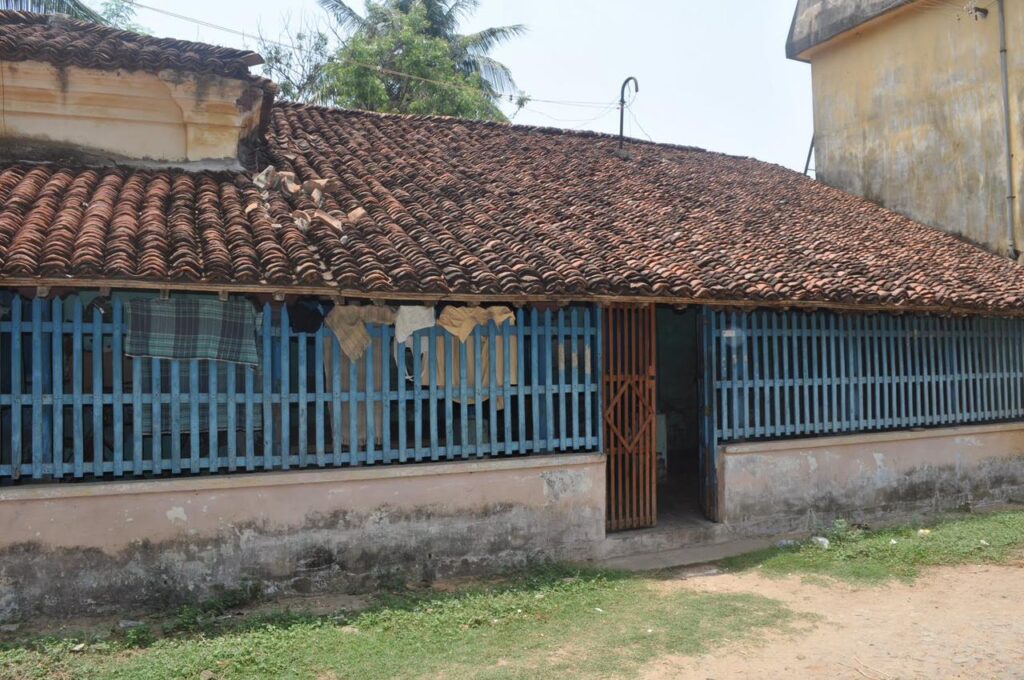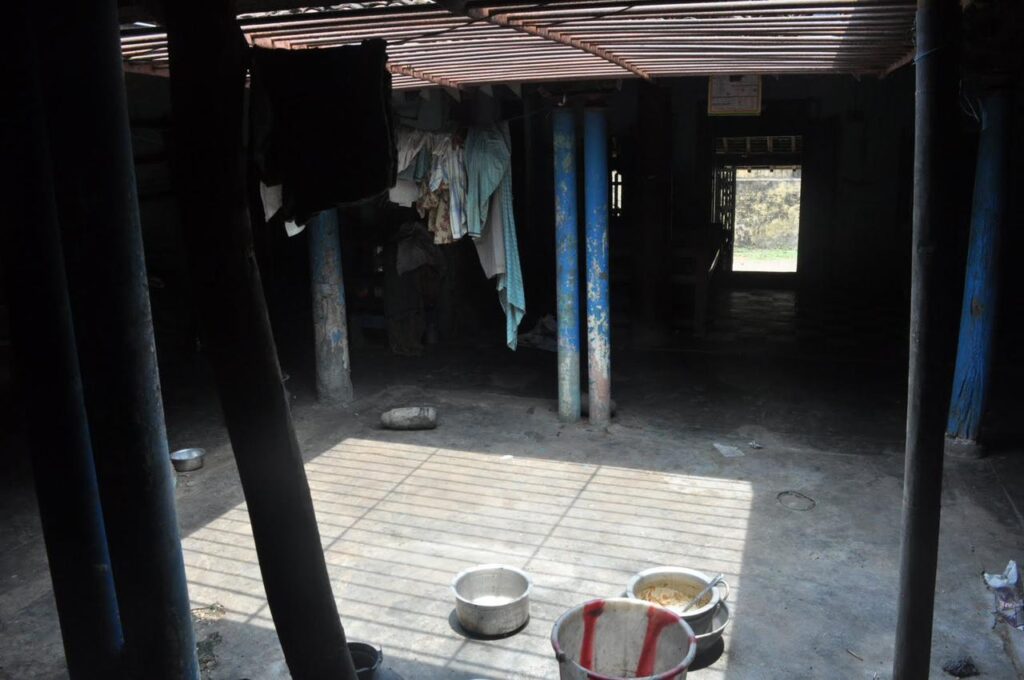The concept of the central courtyard in a home is an intriguing one. Besides being a great light source providing ample ventilation through all the seasons of the year, courtyards bear witness to day to day lives, of growing family trees and of events auspicious and otherwise. When I think of memories surrounding a courtyard, so many of them come flooding from different stages in my life. However, among the most impactful of them all, is a trip to Sikkil that we undertook in 2011, to what was once the family home of my husband.
Sikkil (also called Sikkal) is a sleepy town situated close to the ancient port-city of Nagapattinam, once a celebrated and bustling coastal precinct of the Chola kingdom. Sikkil is known for the majestic Singaravelavar temple and comes to life during the vibrant Skanda Sashti festival that happens every year sometime around Deepavali.
A walk down memory lane years ago, led us to a decrepit building in the agraharam next to the temple, which was once the home of my husband’s great grandfather, Azhiyur Natesa Iyer. This is where he raised his two young daughters, in an environment charged with the mellifluous music of the slender bamboo flute. The sisters grew in age and stature and came to be known as the Sikkil Sisters, acclaimed women flautists in Carnatic music.

Entering the house, we spotted two thinnais and then the nelavu that bore semblance of a long forgotten glory. Crossing a threshold space called a raezhi, led us to the beautiful centre courtyard called muttram in Tamil (colloquially miththam or thaazhvaaram). The air was pregnant with a rich past, seemingly impatient to flaunt the stories of the two sisters – the older Kunjumani, coy, quiet and slightly mature for her age, the younger Neela, feisty, witty and boisterous – similar in character to the music they created. My mother-in-law Mythili assumed the position of the tour-guide to an eager bunch of listeners.
All the rooms of the house led to the miththam and as was common practice those days, everyone used their private spaces only to retire for the day. Life revolved around the courtyard day in and day out. Everyday, after the morning pujai, the sisters would have music lessons from their father in the space surrounding the miththam. There was also a swing on one of the corridors bordering the courtyard and my mother in law vividly described how Neela would belt out brisk brighas one after the other while swaying up and down on the oonjal! On another corridor was the uggaraanam ull (store room or pantry) where provisions were stored in large quantities. One corner of the miththam had a fixed aataangal (stone wet grinder) to grind batters, a kallural (for dehusking rice and bran) and a yendhiram (translates simply into machine) used to powder large quantities of dry food like rice among other things. She described how the miththam had an important role to play during every season. Summer was the time when her Paati would make vadaam maavu and dry out the vadaams on an old muslin cloth, and also naturally dehydrate vegetables like brinjal and cluster beans into vathals. When it rained, the rainwater was harvested organically from the courtyard and it was the most beautiful time to sit around there munching on hot bajji sojji!

Sadly, the house was quite dilapidated when we visited and only the bare minimum still remained after more than a century. The kitchen was being used to make bright coloured hard candy and thenmittai by a nearby shop keeper. My mother-in-law’s descriptions brought the memories alive and gave all of us a glimpse into a bygone era where doors were always kept open and visitors always left with their bellies full. We left with our hearts heavy and yearning for more, while the house stood on quietly waiting for another dawn.
Janani Lakshminarayan is a freelance writer passionate about food writing exploring different cuisines and tracing the origins of culinary traditions around the world, and also parenting experiences revolving around breastfeeding, baby led weaning and children’s literature. In the distant past, she studied to be a Computer Science Engineer and enjoyed a brief stint as a Database Administrator in the corporate world, before discovering her artistic inclinations. She switched career paths to foray into studying journalism which opened her mind to a different perspective of life, before she found writing to be her truest form of expression.
Photo Credit: Janani Lakshminarayan

